Grey stories woven in colourful threads

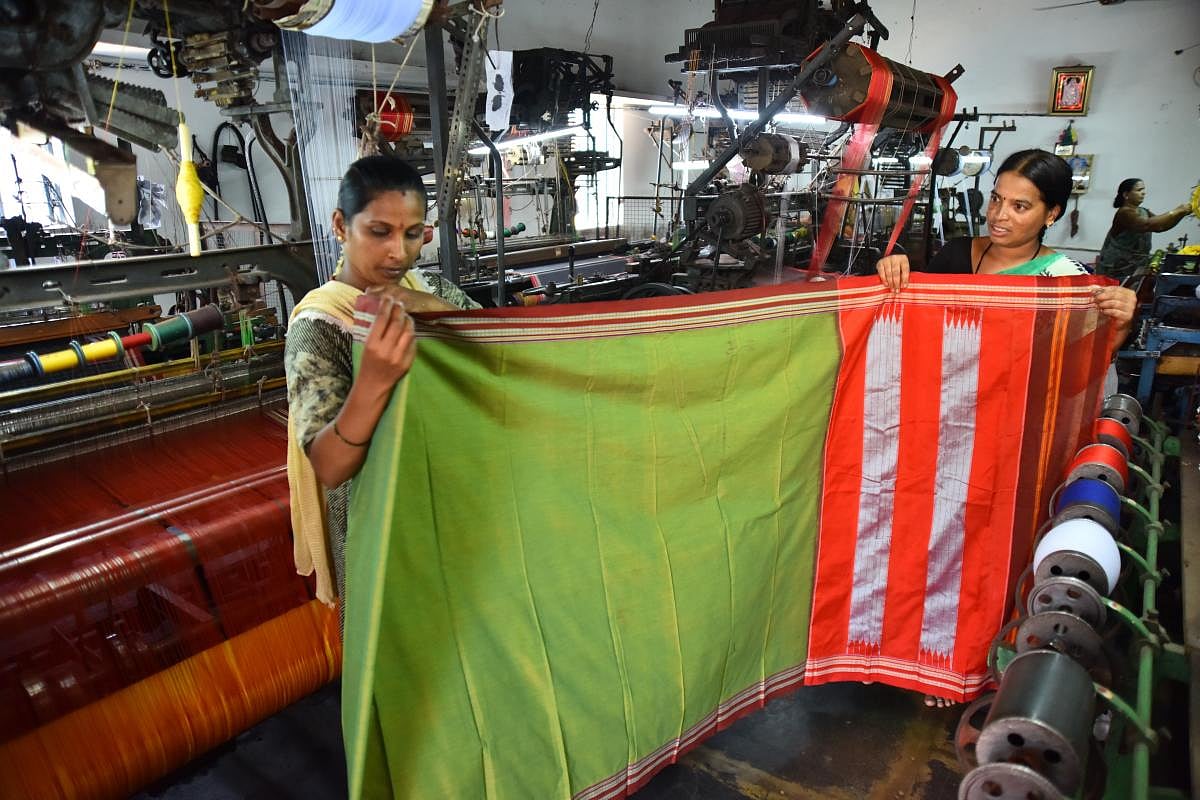
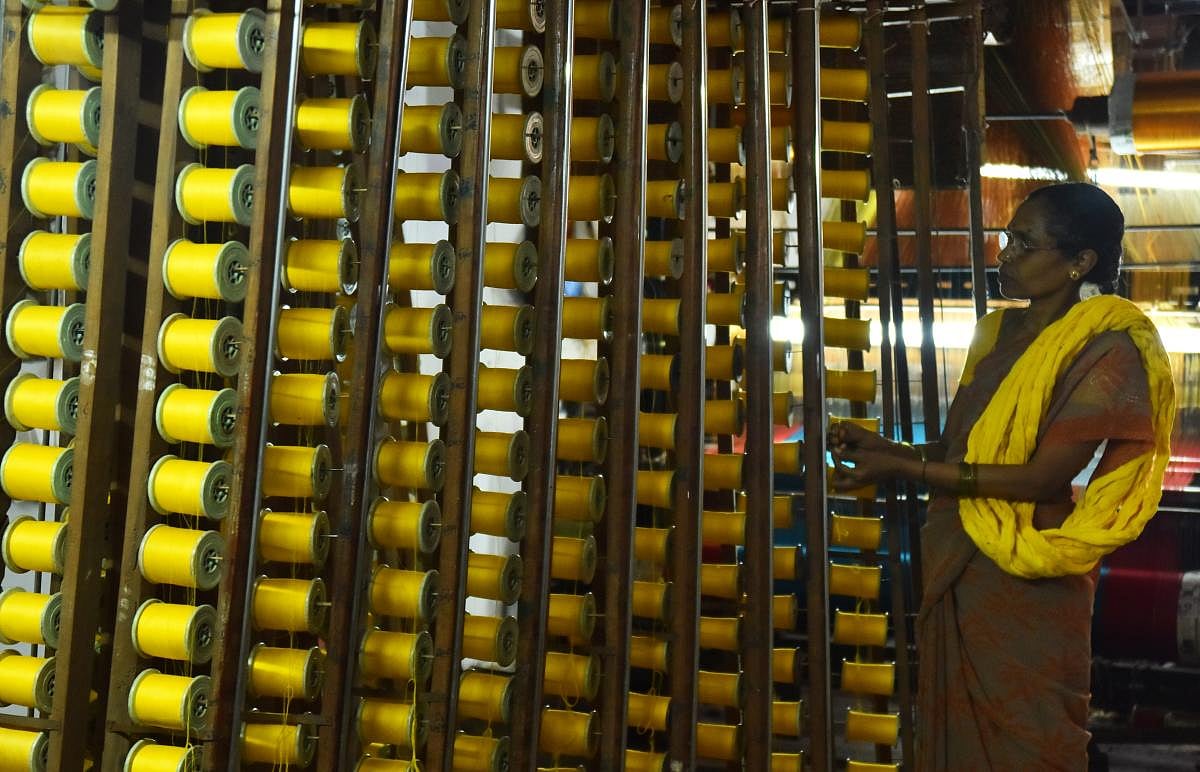

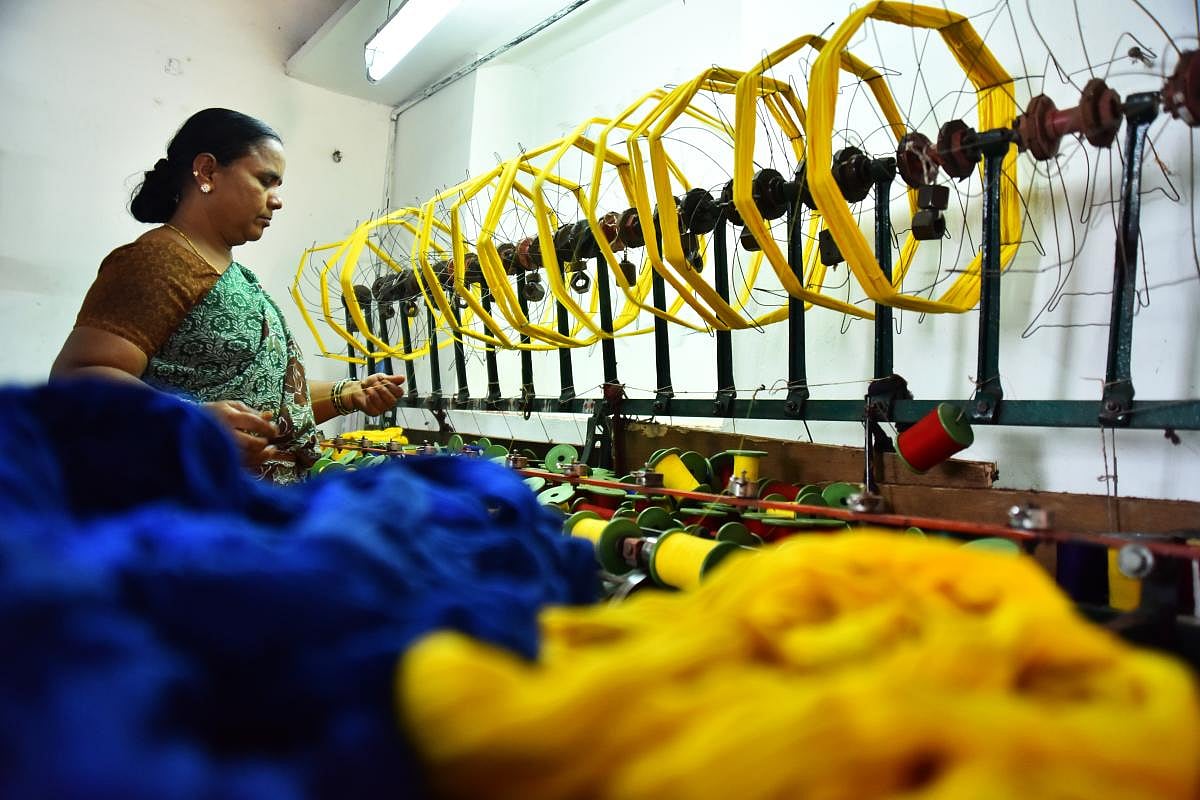
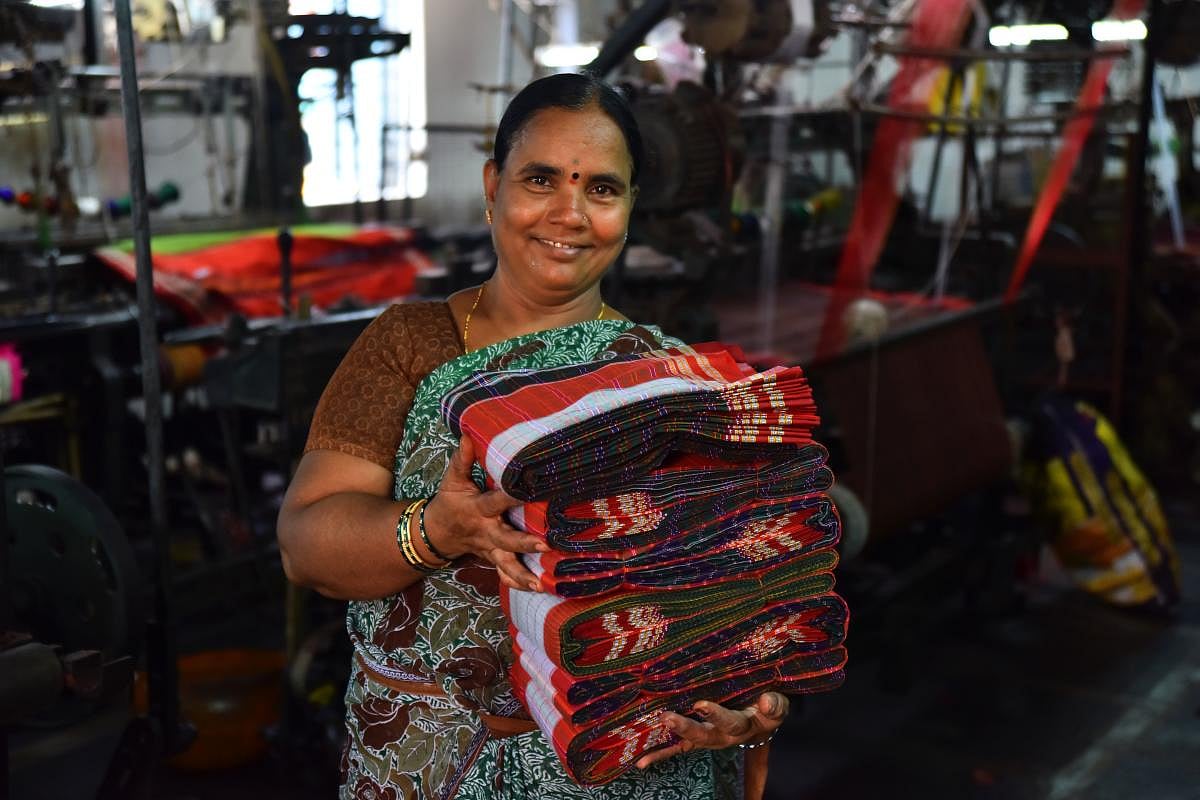
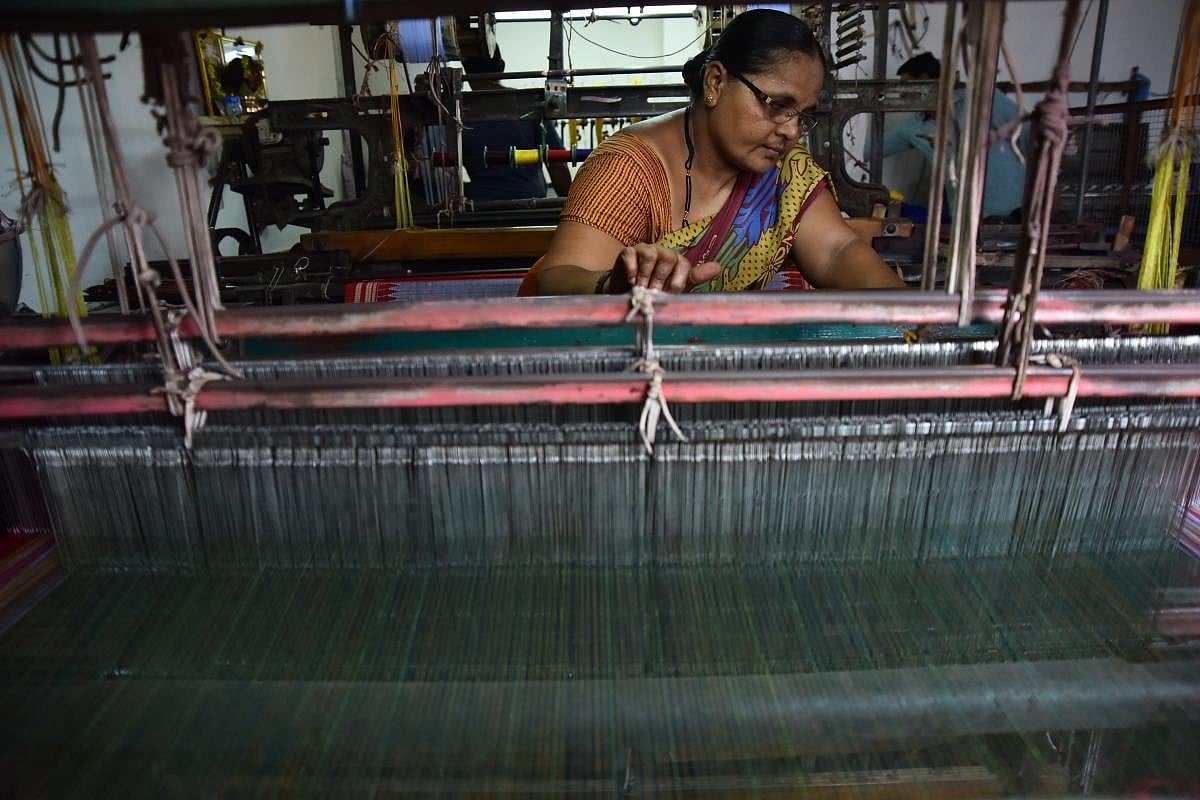
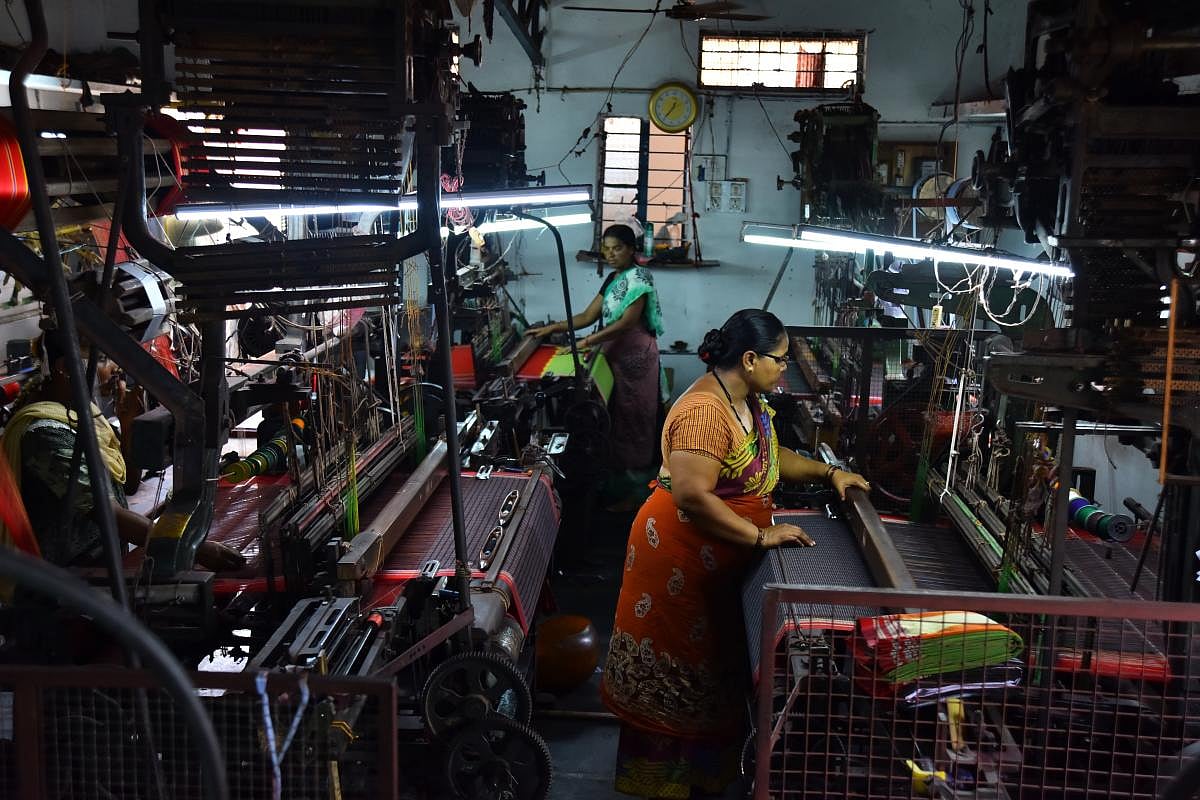

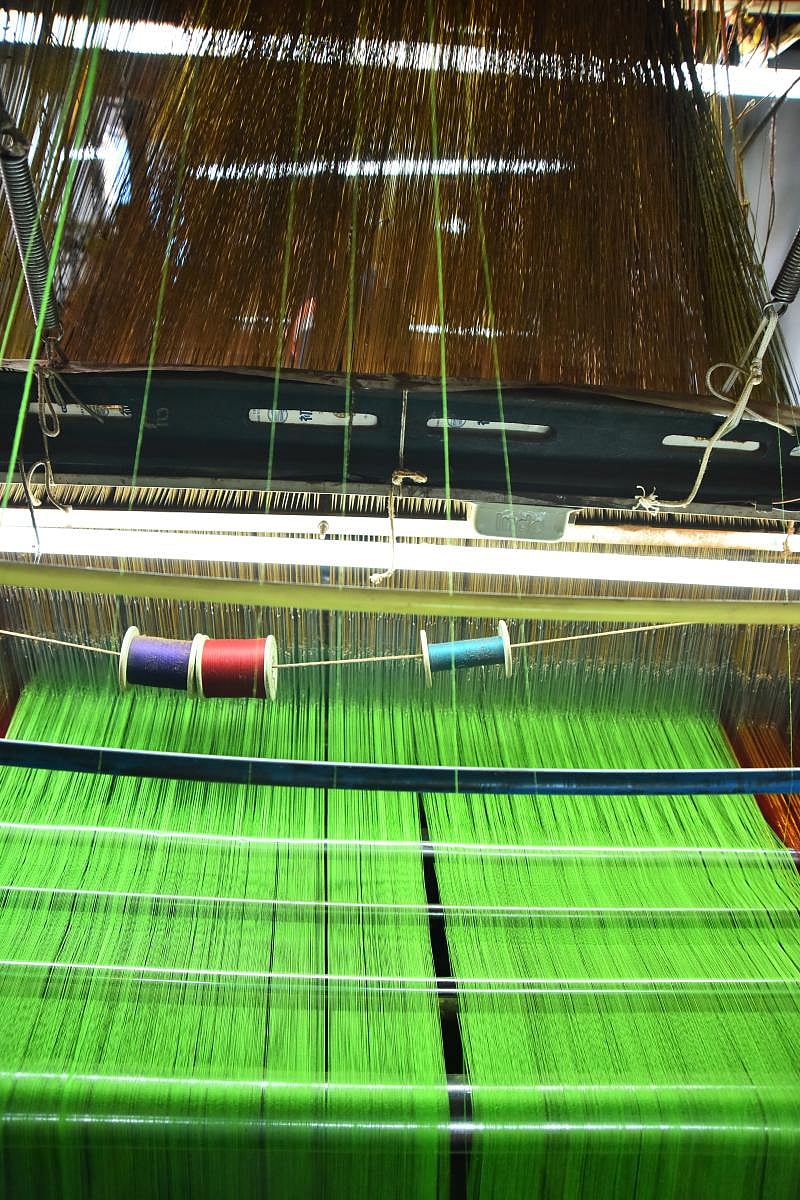
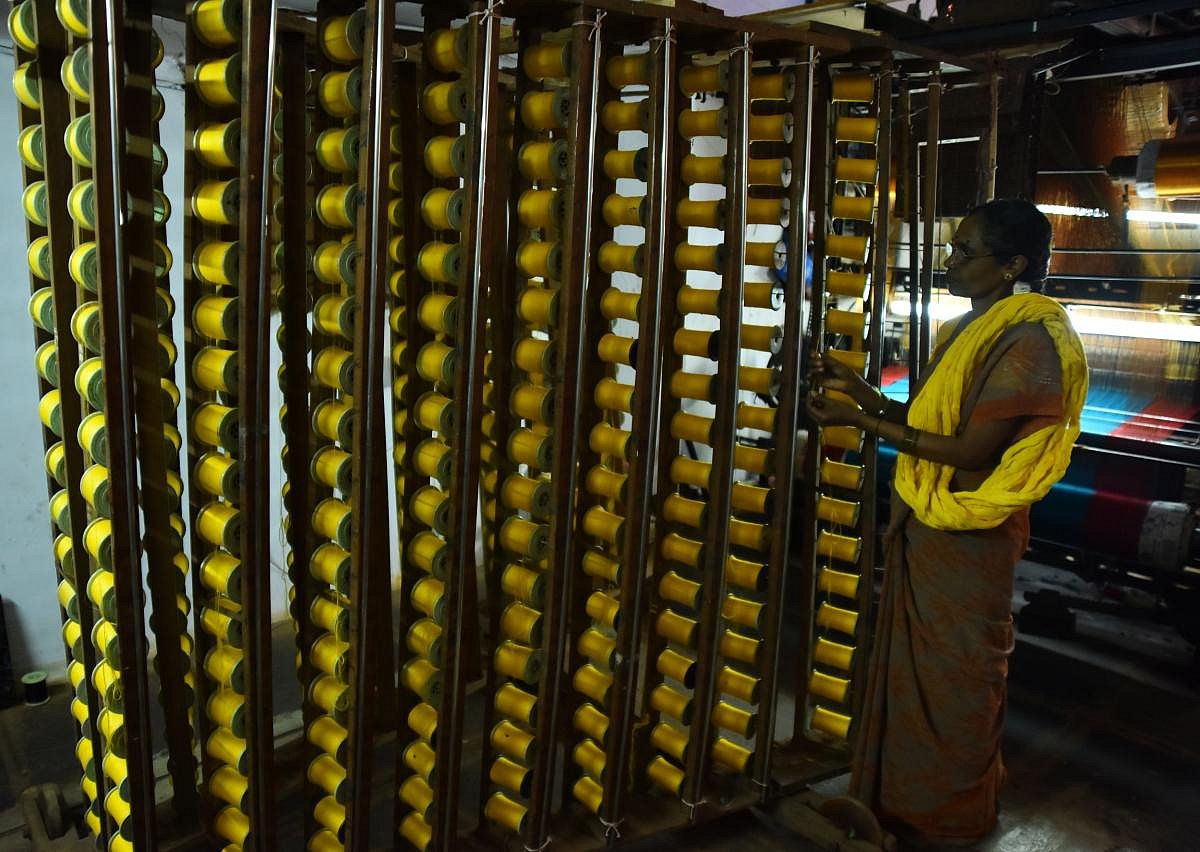
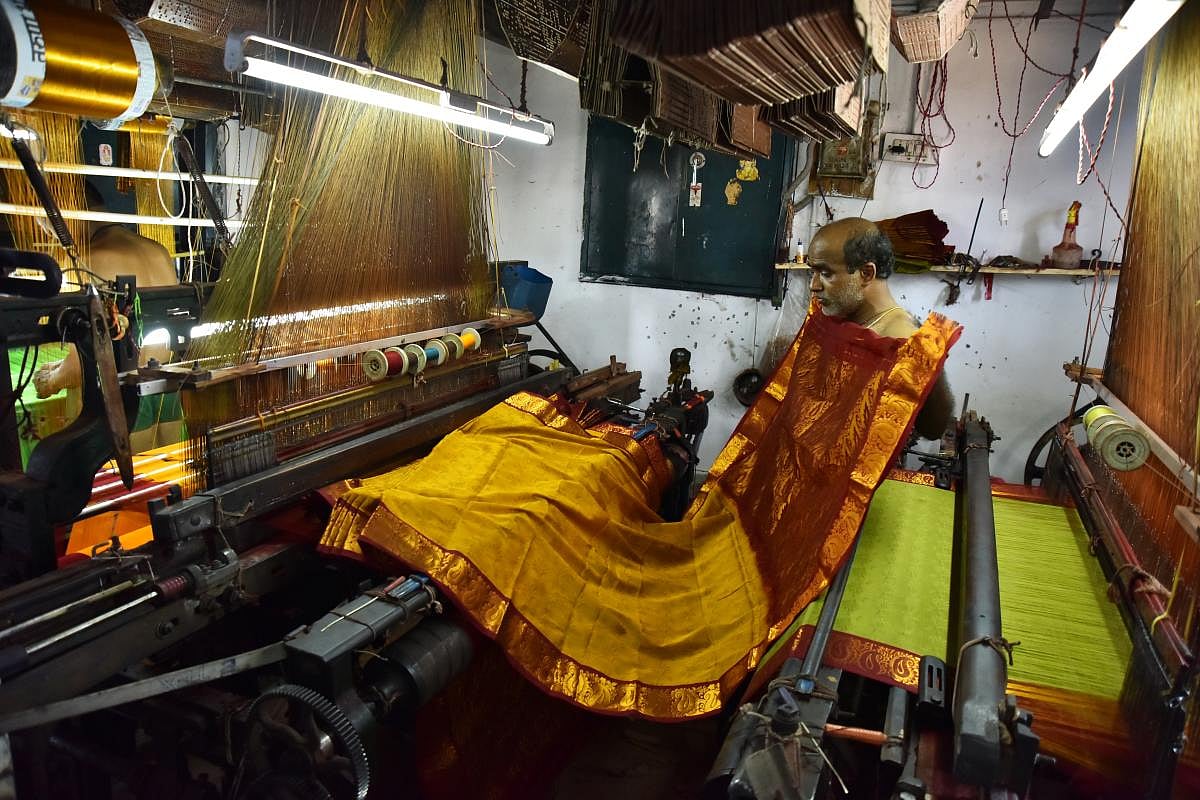
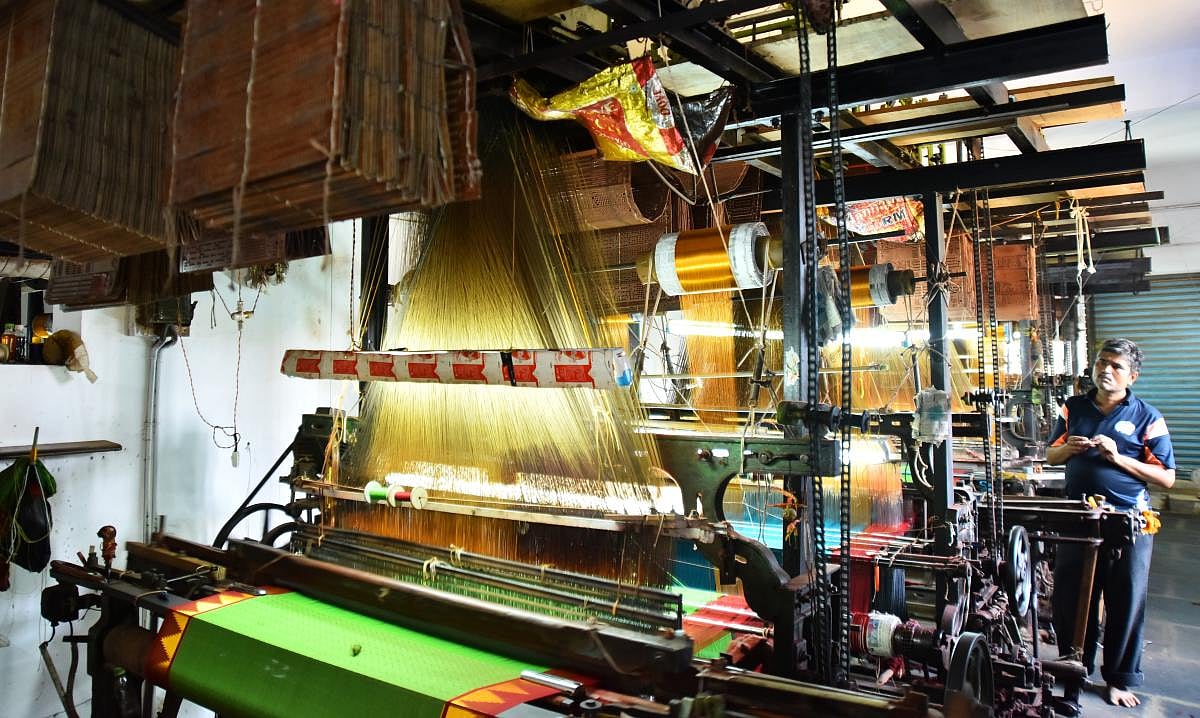
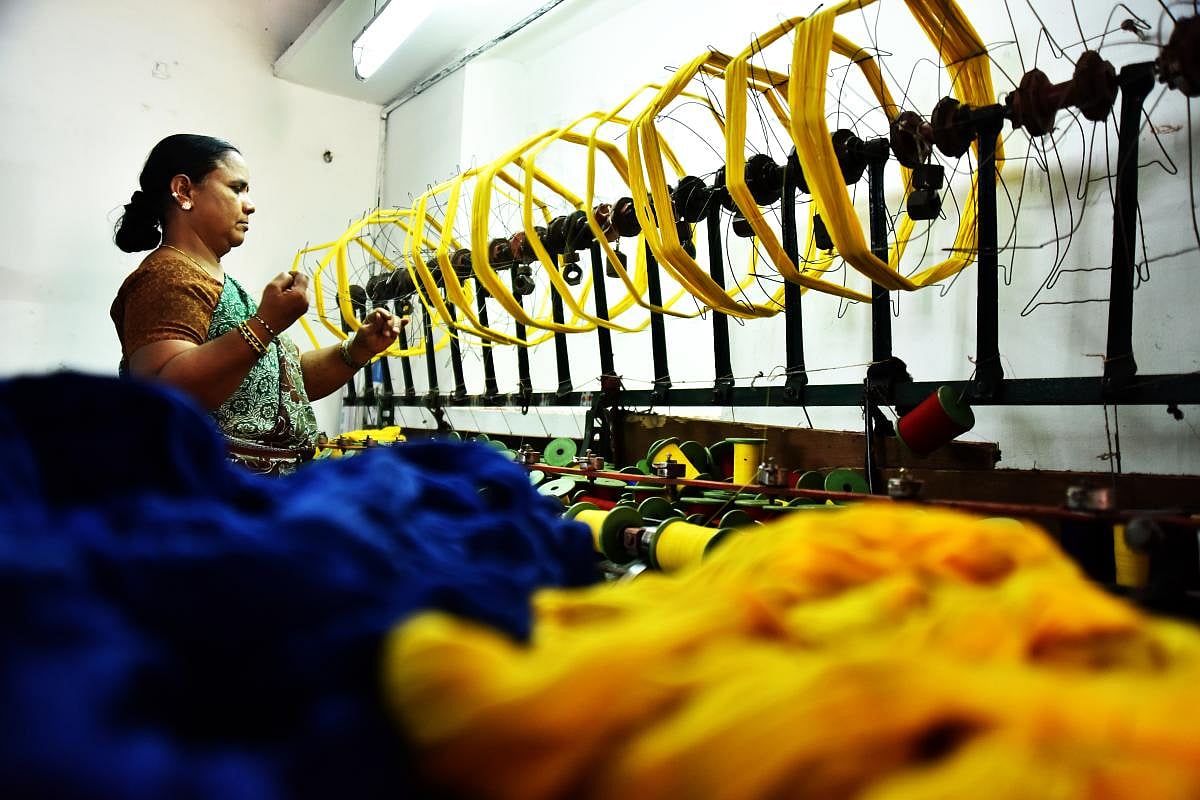
Women, especially the older generation, wearing a typically green or violet-coloured saree with pallav which is invariably red and white banded and ‘Gadi Dhadi’ border, can hardly go unnoticed by any person visiting the villages in the undivided Dharwad district and the neighbouring areas.
These sarees colloquially known as ‘Merceri’ sarees are must in every rural woman’s wardrobe in Dharwad area and are an integral part of the wedding clothing purchase in every family. These cotton sarees are compactly woven and soft and at the same time are suitable for everyday wear either at home or on the farm. It is the quality of the yarn and the compact weave that make these sarees superior to other sarees produced in the region.
These sarees came to be known as Merceri sarees due to the mercerisation which is a finishing treatment given to cotton yarns to improve the lustre, strength and dye uptake.
“The border of these sarees is called the Gadi Dhadi as there are a series of small motifs of Rudrakshi flowers woven on the border. The border is always red with white motifs and the pallav is red and white banded and uniquely woven with three shuttles. The pallav is called the top-teni said to resemble the ear heads of grains. The saree is either plain or has various chequered patterns and is basically made of cotton yarns, the pallav is either cotton or pure silk or rayon,” explains Prof Jyoti Vastrad of University of Agriculture Sciences, Dharwad who has done research on the textiles of Dharwad district.
Transition
A little digging in the backyard revealed that these cotton sarees are woven in a few places in undivided Dharwad district including Hubballi, which had a cotton market for centuries. “Around 30 years back, there were around 500 to 600 handloom units in Hubballi alone and the weavers mainly wove Janata sarees, towels, lungis, bedsheets etc. Around 20 years back, the number came down to 100 units and most of them wove such traditional sarees on the pit looms. But today, there is hardly any handloom weaver left due to problems like hard work involved and lack of government support. Even in places like Shigli, Kinnal and others near Dharwad district which produced such sarees in large numbers, power looms have taken over handlooms,” said N J Malvade, a leader of the weavers’ community and a third-generation handloom weaver in Hubballi.
According to weavers Manjunath Gondkar, Tippanna Chincha and Mahadev Sondur, who run handloom units in the old Nekar Nagar in Hubballi, Merceri sarees are being woven in Hubballi for the past one century. These heritage sarees are in demand in Belagavi, Gadag, Haveri and Dharwad districts in spite of the onslaught of fancy sarees. People mostly prefer green and
violet-coloured wadla or the body and Gadi Dhadi border. The colour and the designs are nearer to earthy elements and people love them in originality over improved designs. Other nearby places also have weavers making such sarees but the signature sarees of Hubballi have a cotton border which makes it light-weight and at the same time rough and tough. Presently, they can weave two such sarees in a day on one power loom working for six to seven hours as compared to one saree for every two to three days on a handloom.
They opine that even power loom weaving needs expert machine handlers with a good knowledge of designs as a small mistake, especially while joining the body and pallav can spoil the entire saree. Also, the top teni design on the pallav and temple design on the border have to be done manually, which again consumes time.
They said that the Merceri sarees deserve a comeback just like the other handloom sarees like Kunbi sarees of Goa. These sarees with Guledgudda-style Khana (blouse) look quite elegant and ethnic. Such regional sarees gain popularity only when some celebrity drapes and promotes it.
Apart from such sarees, Dharwad district boasts of the ‘Dharwad sarees’ with Kasuti (hand embroidery). These polycotton sarees with contrast border are sold throughout the world as ‘Dharwad sarees’ are mainly weaved in Lakkundi, around 85 kilometres from Dharwad, and Shigli, another village about 90 km from Dharwad. Later, their aesthetics is enhanced using kasuti (hand embroidery) in Dharwad and then sold in shops across the country.
Lakkundi’s heritage
Explains Jyoti Vastrad, the oldest throw shuttle pit loom (Kuni magga in Kannada) was in use even before 1916 in Lakkundi. Then, off-white coloured lungi called the Ambas Phadiki Dhadi Panche with contrast borders with series of Rudraksha and chrysanthemum motifs on either side were woven on these loom using three shuttles. A custom of wearing the contrast-bordered lungi for rituals and marriages was common practice then. Rayon, the imitation silk, flooded the Indian market during the 1950s. Hence replaced cotton yarns in the border. Power looms were introduced in later 1980s along with cone technique to weave these lungis. It was in earlier 1990s that a saree showroom from Bengaluru encouraged the master weavers of Lakkundi to produce polycotton sarees with contrast borders similar to the bordered lungis. They chose polycot over cotton as it brought down the production cost and also improved production to meet the demand.
Similarly, Shigli was known for producing ‘Jerigi Pethi Datti’, a holy saree used to decorate the idols of Goddess. Later, they wove mercerised sarees on a fly shuttle pit loom. By 1992, Lakkundi polycot sarees became popular in Dharwad market and the weavers of Shigli who came to Dharwad with mercerised sarees were encouraged to produce polycotton sarees.
The warp of these sarees is pure cotton with polyester weft. The border is totally polyester. The border consists of two to three stripes of serially placed motifs like the chrysanthemum and rudraksha. Other popular borders woven are the Paras, Gadi (Ilkal type) and other stylised borders. Though the style of motif varies, the pallav remained plain with three to four bands of varied colours. However, as the demand for Dharwad sarees went up in the international market, intricate hand-made Kasuti embroidery with geometric-patterned motifs of birds, lotus, flowers, bird creepers, elephants, deers, etc., began adorning the pallav and the body.
Now, technically designed embroidery is also done on the sarees. Earlier, only dark-coloured sarees were weaved.
However, the weavers have now come up with lighter colours.
Wiser from experience, weavers have also taken to weaving Salwar Kameez materials with Kasuti to attract the younger generation. They want the government to set up a textile park in Hubballi so that these iconic sarees do not get extinct.
Textile researcher, Hemalatha Jain through her NGO Punarjeevana, has recently revived the Hubballi sarees. She said that traditional Hubballi sarees have elongated flower design in them with bright borders. The warp is in white for the body while contrast weft leads to the ‘Dhoop Chaav’ effect (shadow). She came across such sarees from traditional master weavers. The NGO has a handloom unit with weavers near Hubballi and these artisans weave the authentic Hubballi sarees with natural dye.
To give a new look to Hubballi sarees, she has come up with Ganga-Jamuna borders (borders in different colours on either side), ready-to-wear (where no picot or fall is needed) sarees and sarees with two pallavs (which can be draped either way). She has also come up with stoles, dupattas and home furnishings made of the same fabric and exhibits them across the country.
Arati Hiremath of Dharwad, who along with her team of women weavers, is involved in making Kasuti on Dharwad (produced at Uppin Betageri near Dharwad) sarees said that they have come up with sarees with patchwork in the pallav and Kasuti embroidery on the patches to make it colourful.
They are also mixing and matching the Khann material of Guledgudda with the saree fabric and creating unique sarees, dupattas, chudidars and other such products to attract global customers.